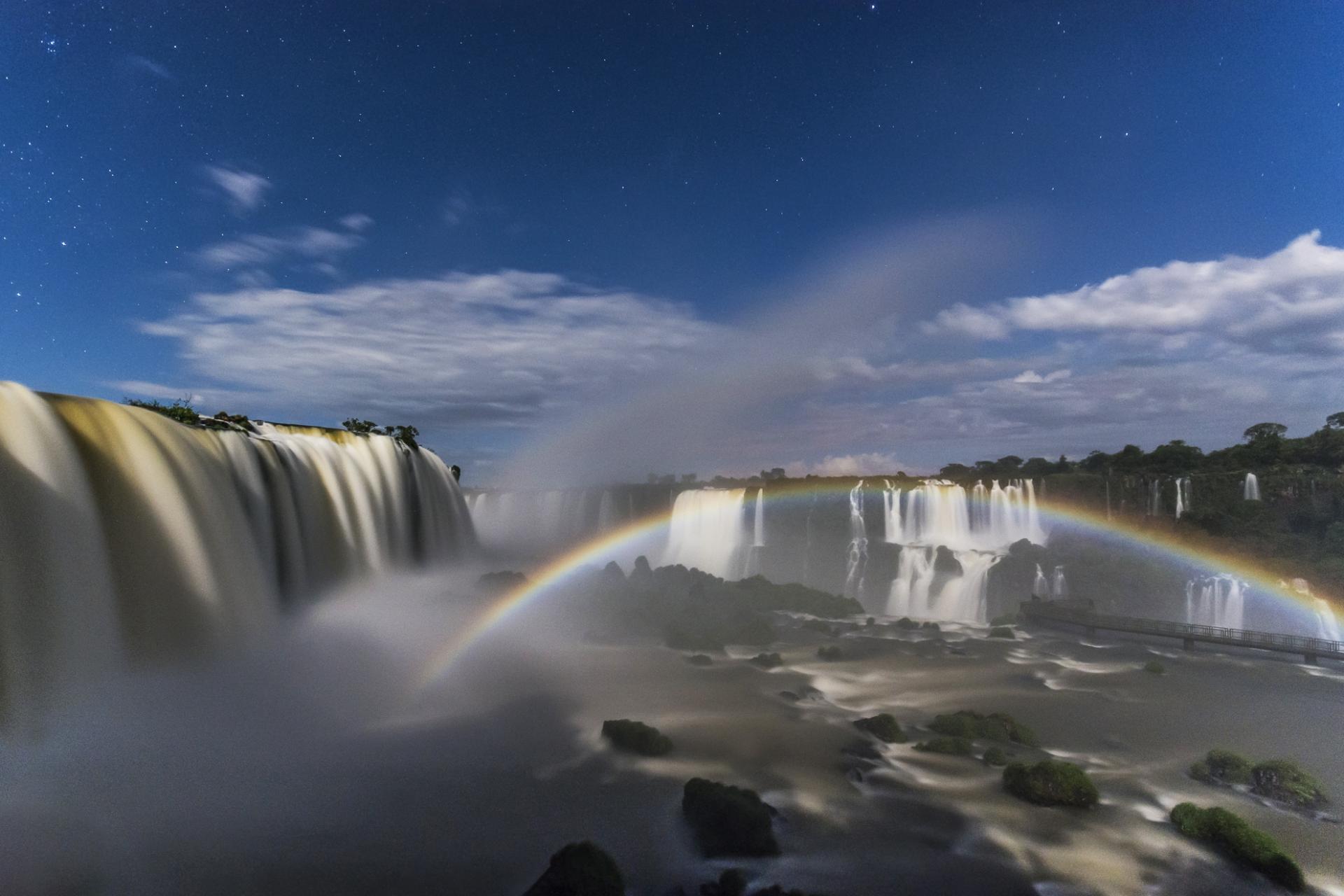The Five Most Exciting National Parks in Brazil

One natural spectacle after another: desert and salt marshes, the Atlantic Rainforest in the middle of the urban jungle, impressive canyons and grasslands, the world's largest waterfall and the fascinating world of the Amazon. What sounds like a trip around the world is, in reality, all to be found on Brazilian soil. Granted, the country is by no means small. Nevertheless, on a round trip, adventurous travelers can discover all of this. There are 71 fascinating national parks in Brazil. Some of them are open to the public. We will show you which 5 are not to be missed during your next trip to Brazil.
Parque Nacional do Pantanal Matogrossense
States of Mato Grosso and Mato Grosso do Sul, Southwest of Brazil
The Pantanal is one of the most fascinating natural paradises in the world. Extending about 89 square miles (230,000 square kilometers), the flooded area is almost as large as Washington State. The largest part is located in the Brazilian states of Mato Grosso and Mato Grosso do Sul, with only a small part in Paraguay and Bolivia. The lifeline of the Pantanal, which is also part of the second-longest river system, is the Paraguay River. Only islands and higher-lying forests are spared by it during the rainy season. In the dry season, the water recedes and you can watch how the lakes slowly turn back into dry meadows. Of course, this breathtaking natural landscape also includes an incredibly rich variety of species. The Pantanal is considered to be the largest ecological reserve in the world, as it combines three of the most important ecosystems in South America: dry forests in the south, grasslands in the east and the Amazon jungle in the north. Whether you prefer a relaxed hike through nature or an adrenaline rush on a jaguar safari, you should definitely plan a visit.
Chapada Diamantina
State of Bahia, Northeast of Brazil
The "diamond plateau" was initially inhabited by indigenous peoples. It was nothing but beautiful green landscapes until the first gold was found in 1710. Some were also interested in the diamonds found in 1844 and so the region was gradually developed. Since 1985, Chapada Diamantina has been one of the 71 national parks of Brazil and a popular destination for tourists from all over the world. This green paradise is home to beautiful natural swimming pools, caves and waterfalls and offers the perfect opportunity to relax in the middle of nature. The national park is located in the heart of Bahia. Thus, a visit to the lively capital, Salvador, can be combined wonderfully with an excursion into nature amidst rivers, grottos, waterfalls and mountains.
Parque Nacional da Tijuca
Rio de Janeiro, Southeast of Brazil
Why, out of a selection of 71 national parks, are we now mentioning the smallest of them all? It is, of course, not without reason. Rio de Janeiro is mainly associated with its charming old town, Copacabana and the impressive statue of Christ the Redeemer. But the green oasis in the middle of the urban jungle often gets less attention. While New Yorkers are proud of their green Central Park, Cariocas have a park 12 times bigger with unique flora and fauna at their disposal. In 1961, the region was declared a protected area in order to guard the Atlantic Rainforest in the middle of the megacity. What many people don't know is, that the landmark of Rio, Christ the Redeemer, is itself located in Parque da Tijuca. But you should not miss other parts of the park. A visit to the Atlantic Rainforest is simply part of your trip while in Rio de Janeiro.
Lençóis Maranhenses
State of Maranhão, North of Brazil
To call a national park "bed sheets" seems unusual at first. But once you are there, you quickly understand where the name comes from. The Lençóis Maranhenses National Park, along the coast of the state of Maranhão, is characterized by snow-white dunes. The wind causes the overall landscape to change constantly and the sand nestles up against the coast like white bed sheets. The 155,000-hectare national park has 70 beaches all in unspoiled nature. Within the sandy desert, one repeatedly comes across lagoons with clear water. These lagoons are perfect for those who would rather avoid salty seawater. An experience to behold while here is the "Route of Emotions", on which you travel by boat, four-wheel-drive vehicles and beach buggies from São Luís via the Lençóis Maranhenses National Park to Jericoacoara. This journey is a great way to discover the fascinating desert and its surroundings.
Iguaçu National Park
State of Paraná, South of Brazil
The Iguaçu Falls, wider than the famous Victoria Falls and higher than Niagara Falls, have earned the title of the largest waterfalls in the world. This impressive natural wonder of Iguaçu, translating to "big water" from the language of the Guarani, is without a doubt one of the highlights of the country. The national park is located on both Brazilian and Argentinean soil. Both sides deserve a visit. A total of 275 waterfalls extends over a width of 1.8 miles (3 kilometers) and falls more than 262 feet (80 meters) into the depths. The jungle in this area is very well preserved and became a national park under nature protection in 1939. This also aims to protect the unique flora and fauna. In the national park, you can meet capybaras and tree frogs, among other species. Above the waterfalls, you'll also see parrots, hummingbirds and toucans flying through the air. If you take a closer look during your walk through the national park, you will discover numerous rare plants, including beautiful orchids. Over 2,000 plant species are said to be present across the entire park.
Whether you have your sights set on one or all five national parks, the Aventura do Brasil team would be more than happy to help you organize your trip to Brazil.
Sources: www.brasilien.de, www.brasilienportal.ch, www.brasiloo.de

